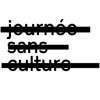The following material was produced as an extension of the 21 October 2015 focus-day session entitled Speech and frozen tongue: the beginning of a lexicon.
During this session a number of texts were distributed; these texts were discussed and analyzed collaboratively by the participants.
One of these texts was a press release from the Conseil des arts et des lettres du Québec, dated 21 September 2015 and entitled “Le CALQ annonce ses nouvelles orientations et les premiers changements à ses programmes de soutien.”
Participants proposed definitions for words and phrases in this press release, and speculated about terms that might have multiple connotations. This activity focussed attention on potential differences between literal, intended and potential meanings of a text as they might be understood, imagined or contested by a reader.
It occurred to me that documenting these kinds of differences in meaning could be done systematically to enlarge the scope of an analysis.
There wasn’t time to do create this framework during the session, but a few months later I took the interpretative categories that I remember the group developing, reformulated them in my own words, and applied them to the above-mentioned text at the level of individual words.
It should be noted that the press release as analyzed and discussed on 21 October 2015 was originally located at:
http://www.calq.gouv.qc.ca/communiques/2015/20150921.htm
On 1 September 2016 a modified version of this press release was located at:
https://www.calq.gouv.qc.ca/actualites-et-publications/orientations-et-premiers-changements/
In order to document the source material and its use during the focus-day session, the analytic framework retains the text of the original press release.
– Tim Dallett

Recent Comments